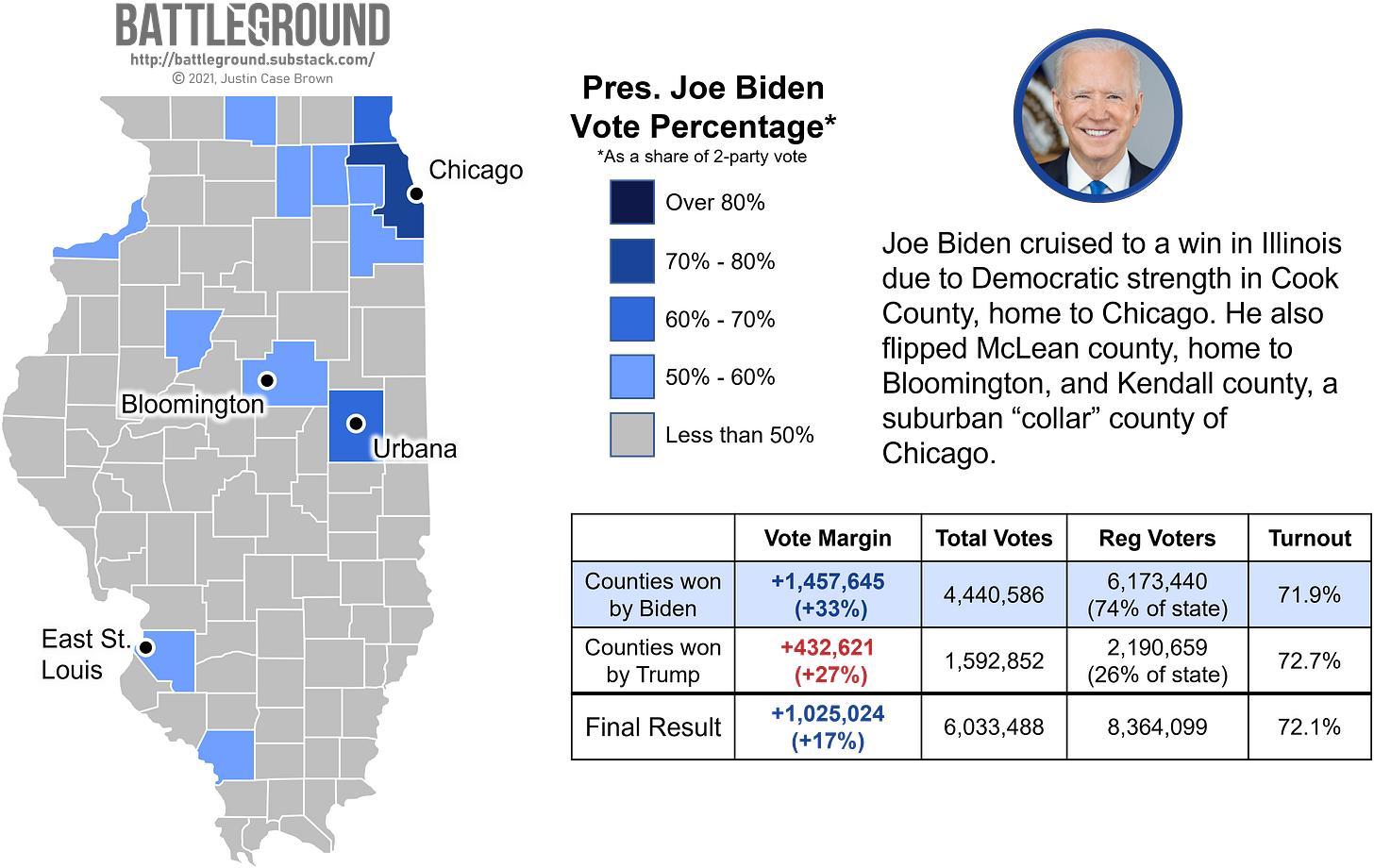Illinois: Chicago vs. Downstate
Political shifts in The Prairie State are emblematic of trends nationwide.
Topline Takeaways
Joe Biden won Illinois easily as he won most of the counties in the Chicago metropolitan area.
Donald Trump’s commitment to coal helped him build a Republican coalition in the Downstate region of the state.
Illinois’ current 17th congressional district in northwest Illinois is one of only seven in the country that voted for Trump while also supporting a Democratic candidate for the US House.
In-Depth Insights
Chicago continues to play kingmaker in Illinois politics as the majority of the state’s voters live in the city’s expansive metropolitan area. Cook county alone cast 38% of the total Illinois presidential vote in 2020. Biden won the county with 74% of the vote, a slight decline from Hillary Clinton vote share in 2016 after excluding third party votes. Instead, Biden bested Clinton in the Chicago suburbs: he improved on her margins in six of the city’s “collar” counties and ultimately flipped Kendall county, which hasn’t voted for a Democratic presidential candidate since Barack Obama’s first election in 2008. In the southern reaches of the state, Biden struggled in rural counties but was able to make inroads in the state’s college towns like Bloomington (home to Illinois State University) and Urbana (home to University of Illinois).
While Trump was never expected to win Illinois, he continued to shift much of Downstate Illinois toward the Republican party. 1992 marked the first year in three decades that Illinois voted for the Democratic candidate. While Bill Clinton saw relatively strong support from Cook county, a wide swath of southern counties stretching between Missouri and Indiana also helped lift him to victory. Many of these voters were “yellow-dog Democrats:” voters who were culturally conservative but reliably supported Democratic candidates. As politics became more nationalized heading into the 2000s, many of these voters began to align themselves with Republicans who shared their beliefs on social issues like abortion and gun ownership rights. Donald Trump continued this shift with his commitment to the coal industry.
Many counties in the southern tip of Illinois rely on the coal industry to power their economies. Much like neighboring Kentucky, these voters continued their shift toward Republicans during the Trump administration as he vowed to stand up for these workers by protecting the shrinking industry. Democratic rhetoric around closing coal plants continues to drive workers in these industries towards Republicans as they do not see clear career alternatives.
Forecasting the Future: Many of the shifts happening in Illinois are emblematic of political trends nationwide. Democrats continue to gain ground in the state’s suburbs, both around Chicago and in the state’s smaller towns further south. Republicans continue to consolidate support in rural areas, especially counties that rely on resource extraction. One place these trends are crashing into each other is Illinois’ 17th congressional district in the northwestern corner of the state. It’s a quintessential Obama-Trump district, voting twice for both candidates across the last four elections. It is also one of only seven districts nationwide to vote for Donald Trump in 2020 and also vote for a Democratic House representative, Cheri Bustos. Luckily for Democrats, they’re in control of Illinois’ current redistricting process and may redraw this district to be more favorable for the party.





